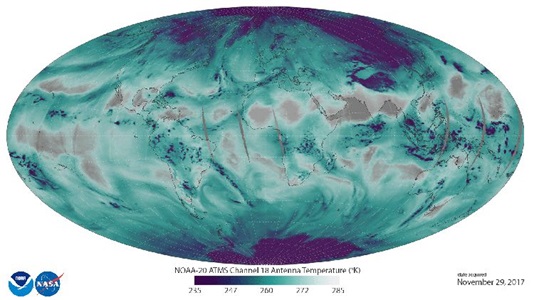Clouds and the Earth's Radiant Energy System (CERES)

Eye on Earth's Radiant Energy System
The most precisely calibrated radiometer ever to fly in space, the Clouds and the Earth's Radiant Energy System (CERES) instrument is measuring emitted and reflected radiative energy from the surface of the Earth and the atmosphere. Previous space-based observations have shown that the role of clouds, which reflect, absorb, and trap radiant energy; is critical in maintaining the Earth's radiant energy balance, a balance threatened by the build-up of carbon dioxide and other greenhouse gases in the atmosphere. The Northrop Grumman-built CERES is providing scientists with the most accurate eye ever for measuring clouds and their impact on Earth's radiant energy system.

Experimental Approach
The CERES experiment is flying broadband scanning radiometers on polar-orbiting and low-Earth-orbit inclined platforms. NASA's EOS Terra and EOS Aqua satellites each carry two broadband CERES instruments, one scanning crosstrack and one rotating while scanning. The rotating scan provides complete angular sampling for more accurate modeling of the scattering of reflected energy from target areas.
Each scanner has three channels. A shortwave channel measures reflected sunlight (0.3 to 5 microns) to 1 percent accuracy; a longwave channel measures earth-emitted radiation (8 to 12 microns) to 0.3 percent accuracy; and a total channel (0.3 to >50 microns) accurate to 0.5 percent. Other instruments typically quote radiometric accuracies of 5 to 10 percent.
CERES must provide highly reliable data across platforms and over the 15-year span that the instruments will fly. To ensure the highest quality data, CERES' sensors have been precisely calibrated using standards traceable to the National Institute of Standards and Technology. A Northrop Grumman extreme-precision calibration facility provides unique calibration capabilities.
